
How to Use flame sensor: Examples, Pinouts, and Specs
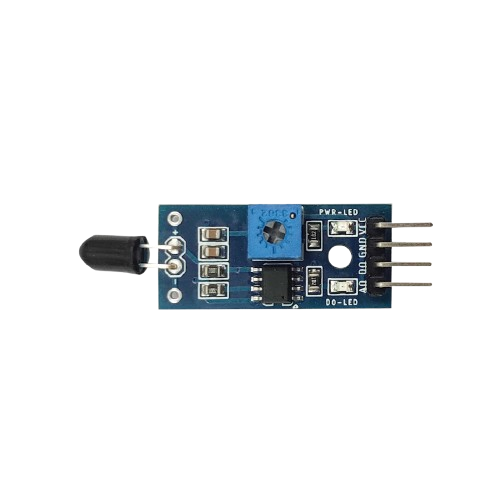
 Design with flame sensor in Cirkit Designer
Design with flame sensor in Cirkit DesignerIntroduction
The Flame Sensor (Manufacturer: Zadetector, Part ID: 220v) is a device designed to detect the presence of fire or flames by sensing the infrared (IR) radiation emitted by the flame. It is a critical component in fire alarm systems, industrial safety systems, and other applications requiring early detection of fire hazards. The sensor is highly sensitive to IR wavelengths typically emitted by flames, making it an effective tool for fire detection.
Explore Projects Built with flame sensor
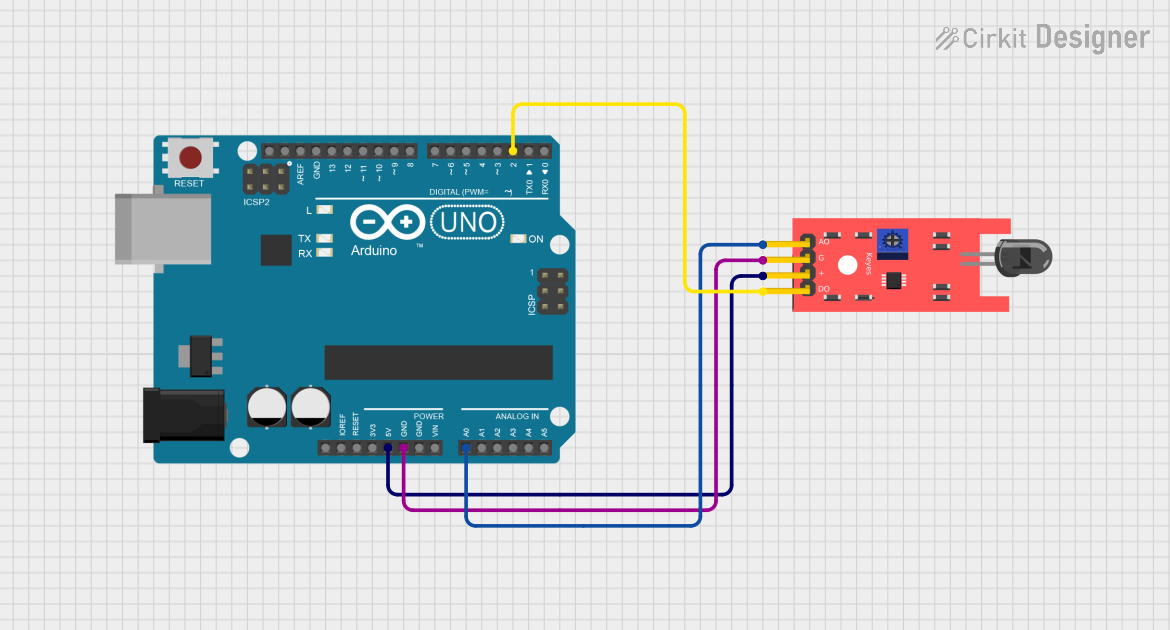
 Open Project in Cirkit Designer
Open Project in Cirkit Designer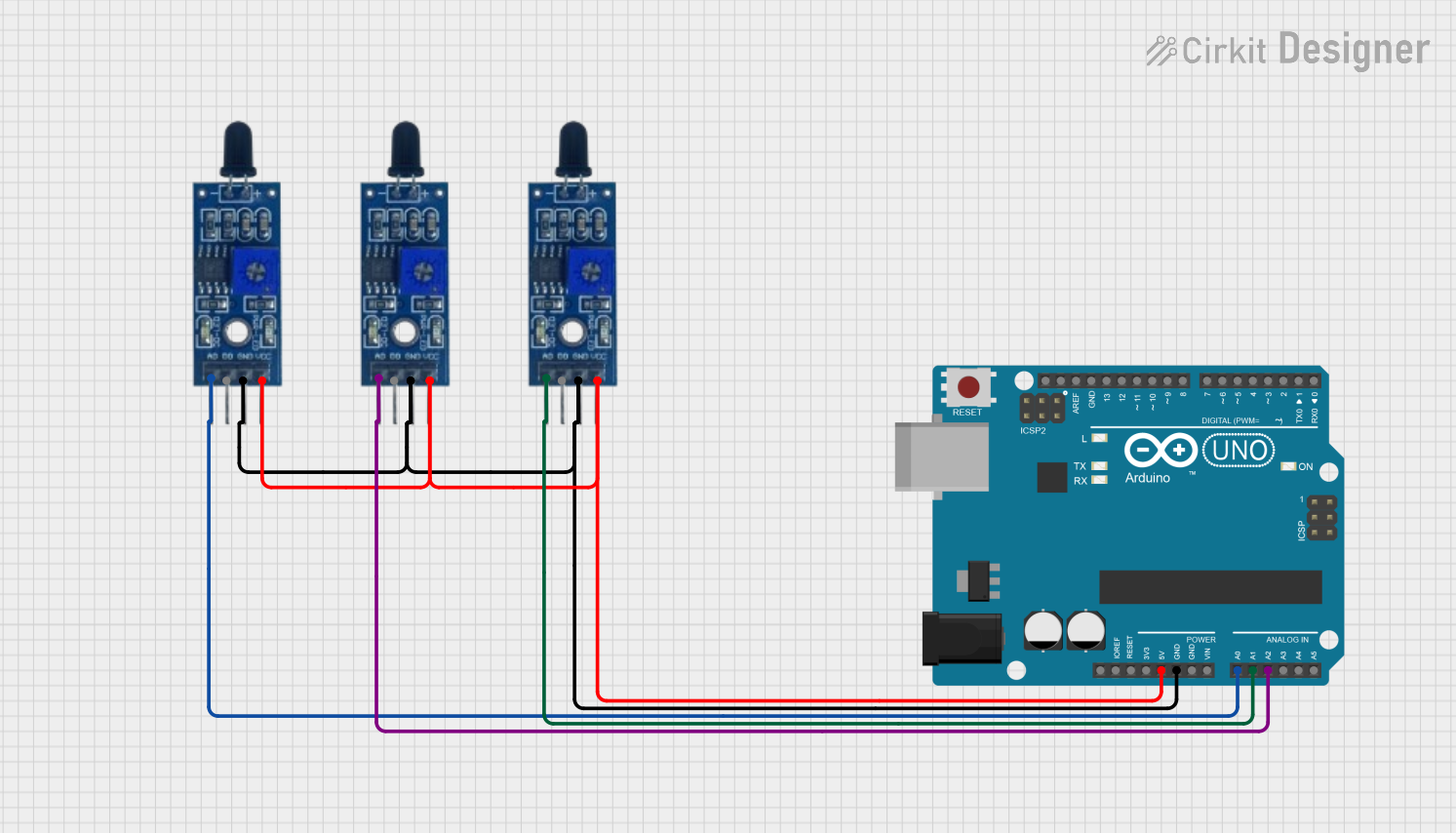
 Open Project in Cirkit Designer
Open Project in Cirkit Designer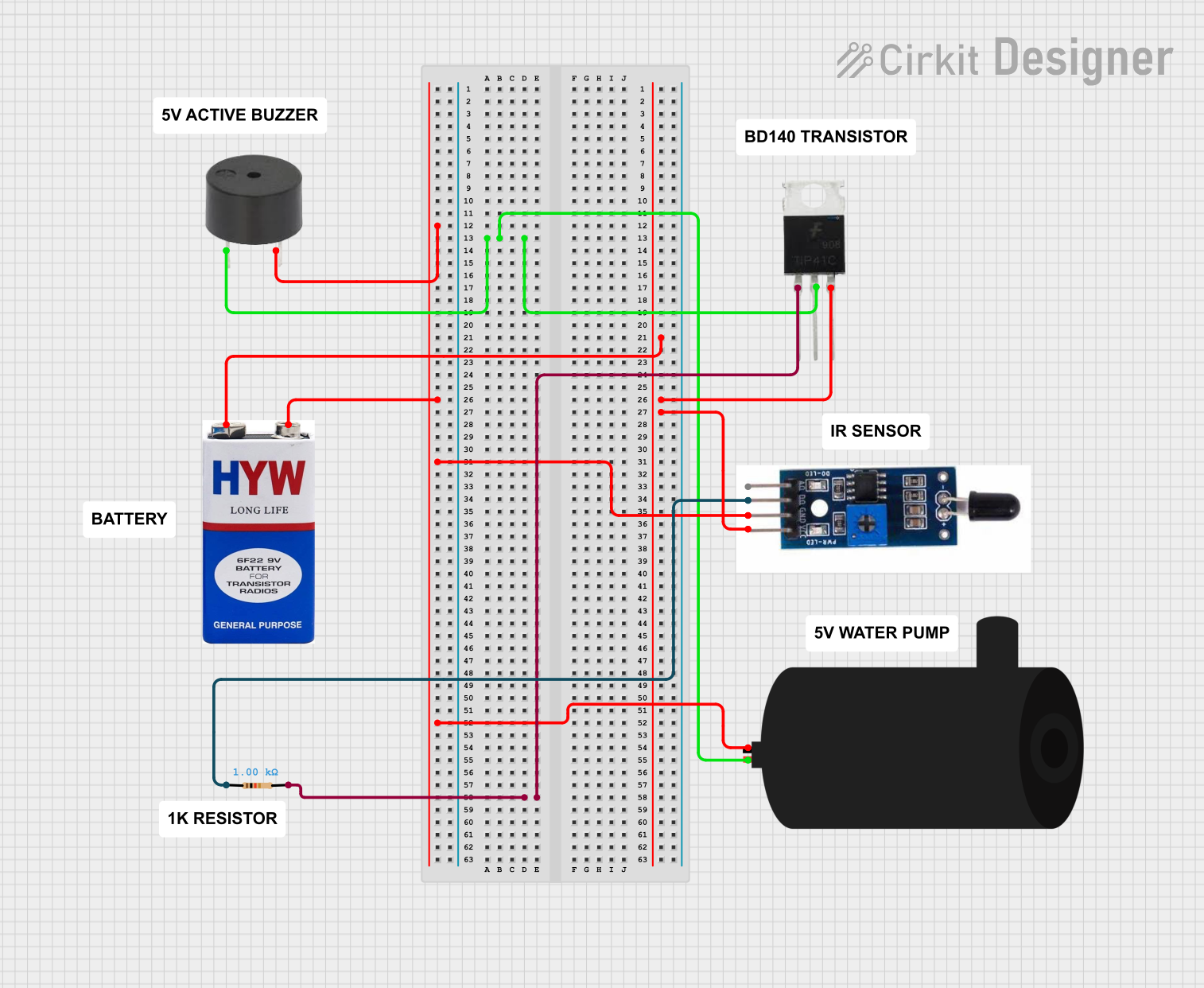
 Open Project in Cirkit Designer
Open Project in Cirkit Designer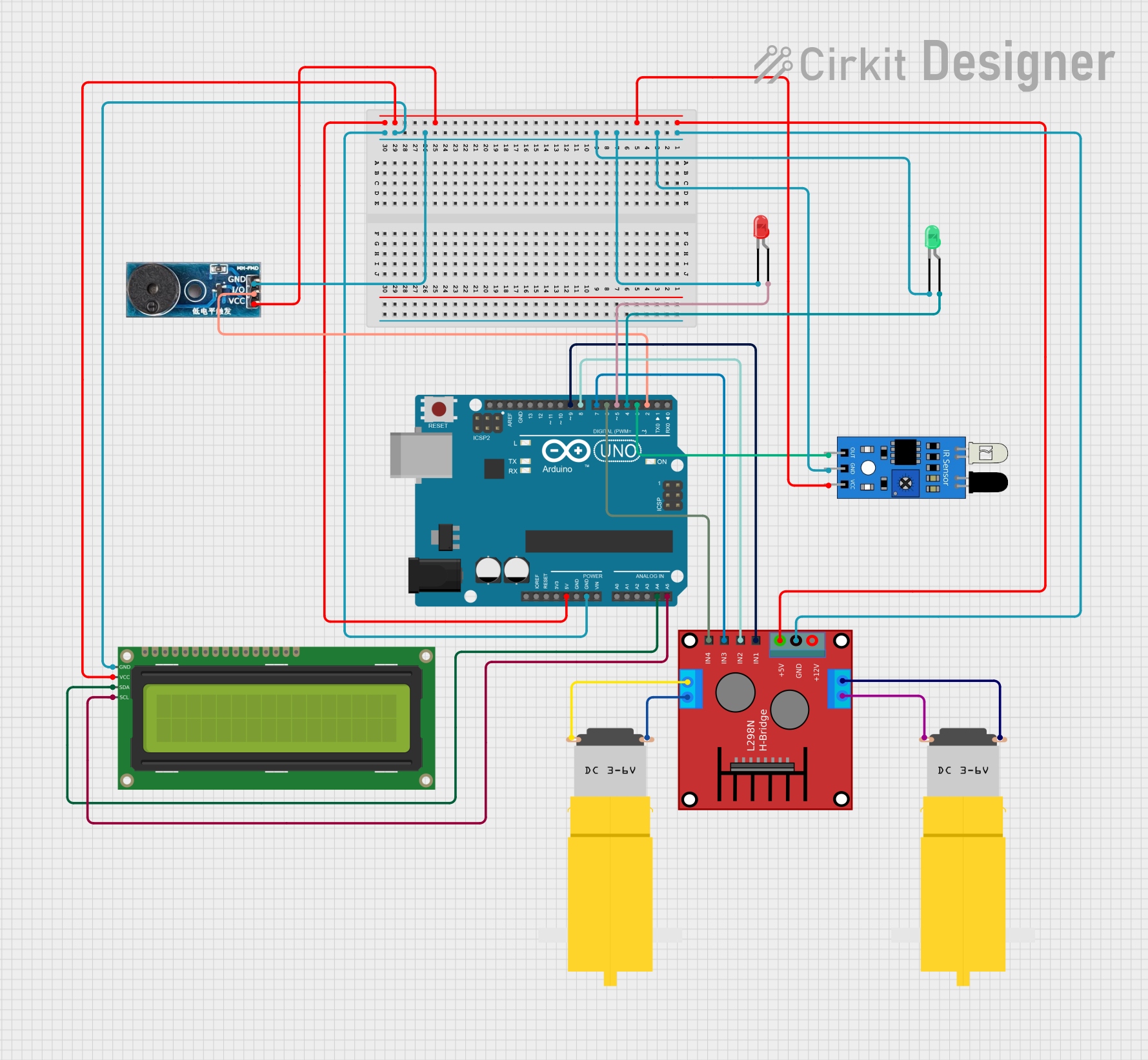
 Open Project in Cirkit Designer
Open Project in Cirkit DesignerExplore Projects Built with flame sensor

 Open Project in Cirkit Designer
Open Project in Cirkit Designer
 Open Project in Cirkit Designer
Open Project in Cirkit Designer
 Open Project in Cirkit Designer
Open Project in Cirkit Designer
 Open Project in Cirkit Designer
Open Project in Cirkit DesignerCommon Applications and Use Cases
- Fire alarm systems in residential, commercial, and industrial settings
- Gas stove flame monitoring
- Industrial safety systems for detecting accidental fires
- Robotics and automation systems for fire detection
- Early warning systems in hazardous environments
Technical Specifications
The following table outlines the key technical details of the Zadetector Flame Sensor (Part ID: 220v):
| Parameter | Value |
|---|---|
| Operating Voltage | 3.3V to 5V |
| Detection Range | 760 nm to 1100 nm (IR wavelength) |
| Detection Angle | 60° |
| Output Type | Digital and Analog |
| Digital Output Voltage | 0V (no flame), 5V (flame detected) |
| Analog Output Voltage | Proportional to flame intensity |
| Operating Temperature | -25°C to 85°C |
| Dimensions | 32mm x 14mm x 8mm |
Pin Configuration and Descriptions
The flame sensor module typically has three pins. The table below describes each pin:
| Pin | Name | Description |
|---|---|---|
| 1 | VCC | Power supply pin. Connect to 3.3V or 5V. |
| 2 | GND | Ground pin. Connect to the ground of the circuit. |
| 3 | OUT | Output pin. Provides a digital signal (HIGH or LOW) or analog signal depending on the flame intensity. |
Usage Instructions
How to Use the Flame Sensor in a Circuit
- Power the Sensor: Connect the VCC pin to a 3.3V or 5V power source and the GND pin to the ground of your circuit.
- Connect the Output:
- For digital output, connect the OUT pin to a digital input pin of your microcontroller (e.g., Arduino).
- For analog output, connect the OUT pin to an analog input pin of your microcontroller.
- Position the Sensor: Place the sensor in a location where it has a clear line of sight to the flame. Ensure the detection angle (60°) is sufficient for your application.
- Read the Output:
- For digital output, the sensor will output HIGH (5V) when a flame is detected and LOW (0V) when no flame is present.
- For analog output, the voltage will vary proportionally to the intensity of the flame.
Important Considerations and Best Practices
- Avoid exposing the sensor to direct sunlight or other strong IR sources, as this may cause false positives.
- Ensure the sensor is not obstructed by objects that could block the IR radiation from the flame.
- Use appropriate pull-up or pull-down resistors if required by your circuit design.
- Regularly clean the sensor lens to maintain optimal performance.
Example: Connecting the Flame Sensor to an Arduino UNO
Below is an example of how to connect and use the flame sensor with an Arduino UNO:
Circuit Connections
- VCC: Connect to the 5V pin on the Arduino.
- GND: Connect to the GND pin on the Arduino.
- OUT: Connect to digital pin 2 on the Arduino.
Arduino Code
// Flame Sensor Example Code
// This code reads the digital output of the flame sensor and turns on an LED
// when a flame is detected.
const int flameSensorPin = 2; // Digital pin connected to the flame sensor OUT pin
const int ledPin = 13; // Built-in LED pin on Arduino
void setup() {
pinMode(flameSensorPin, INPUT); // Set flame sensor pin as input
pinMode(ledPin, OUTPUT); // Set LED pin as output
Serial.begin(9600); // Initialize serial communication
}
void loop() {
int flameDetected = digitalRead(flameSensorPin); // Read the flame sensor output
if (flameDetected == HIGH) {
// Flame detected
digitalWrite(ledPin, HIGH); // Turn on the LED
Serial.println("Flame detected!");
} else {
// No flame detected
digitalWrite(ledPin, LOW); // Turn off the LED
Serial.println("No flame detected.");
}
delay(500); // Wait for 500ms before the next reading
}
Troubleshooting and FAQs
Common Issues and Solutions
False Positives (Flame Detected When No Flame is Present):
- Cause: Strong IR sources (e.g., sunlight, incandescent bulbs) interfering with the sensor.
- Solution: Shield the sensor from external IR sources or use it in a controlled environment.
No Detection of Flame:
- Cause: Incorrect positioning of the sensor or blocked line of sight.
- Solution: Ensure the sensor is properly aligned with the flame and has a clear line of sight.
Unstable Output:
- Cause: Electrical noise or unstable power supply.
- Solution: Use decoupling capacitors near the sensor's power pins to stabilize the power supply.
FAQs
Q1: Can the flame sensor detect flames through glass?
A1: No, most glass materials block IR radiation, so the sensor may not detect flames through glass.
Q2: What is the maximum distance for flame detection?
A2: The detection range depends on the intensity of the flame and environmental conditions. Typically, the sensor can detect flames up to 1 meter away.
Q3: Can I use the flame sensor outdoors?
A3: While the sensor can be used outdoors, it should be protected from direct sunlight, rain, and dust to ensure reliable operation.
Q4: Is the sensor compatible with 3.3V microcontrollers?
A4: Yes, the sensor operates at 3.3V to 5V, making it compatible with both 3.3V and 5V microcontrollers.